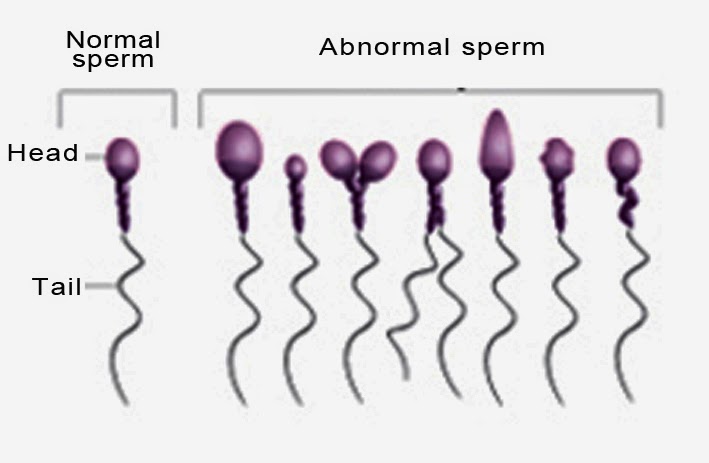


For most men, sperm production will begin to drop after age 40. As he ages, his sperm can become less healthy. Can sperm shape be corrected?Ī man’s body is always producing new sperm. Find out about other causes of male infertility. Sperm morphology is just one of many factors affecting male fertility. Once the sperm and egg combine to make an embryo, it will be implanted into the woman’s womb at the right stage of development. Taking antioxidants in male fertility supplements for three or more months has been shown by some researchers to improve abnormal sperm morphology.ĭuring IVF with ICSI, the lab will be able to choose a sperm that has the highest chance of success, based on morphology and motility, and directly inject the sperm into a woman’s egg. Intracytoplasmic sperm injection (ICSI) can be used in addition to IVF to increase the chances. Intrauterine insemination (IUI) or in vitro fertilization (IVF) may be an option for those with sperm morphology issues. Most men with abnormal sperm morphology are still able to father a child, but achieving pregnancy may take longer or require assistance from a fertility specialist. Morphology can affect fertility because sperm need a certain shape to be able to penetrate the outer layers of the egg. While the most common cause of male infertility is low sperm count, the shape of the sperm can also play a role. DFS has been linked to a higher percentage of sperm aneuploidies or abnormal chromosomes. Stump-tail or DFS is an autosomal recessive genetic disease connected with abnormal genes that encode for proteins such as the sperm neck centrin 1 protein. Some patients with DFS also have chronic respiratory disease associated with immotile cilia syndrome. This tail defect happens during late spermiogenesis or sperm cell formation in the testis. Sperm cells with short tails often have low or no motility and are called stump tail or Dysplasia of Fibrous Sheath (DFS) sperm. As of 2010, they consider the presence of 4 percent and higher of sperm having normal morphology as the ideal sample composition for fertility. The World Health Organization also published their own sperm analysis criteria. 0-3 percent – fertility extremely impaired.4-14 percent – fertility slightly decreased.Over 14 percent of sperm have normal morphology – high probability of fertility.Below are the Kruger Strict Criteria scores and their explanations: Loma Linda Center for Fertility & IVF uses the Kruger Strict Criteria to evaluate sperm morphology, which is used by most doctors. The medical term for when a man has a large number of abnormally shaped sperm is teratozoospermia or teratospermia. There are many factors that can lead to abnormally shaped sperm including increased testicular temperature, exposure to toxic chemicals, infection and genetic traits. The semen analysis will also examine the motility (movement ability) and concentration of sperm present.Įvery male, fertile or infertile, has varying percentages of abnormally-shaped sperm. Sperm morphology is assessed during routine semen analysis that examines the sperm cells under a microscope. The head shape is important because it can affect the sperm’s ability to penetrate the outer surface of a woman’s egg to fertilize it. Sperm morphology refers to the shape of the sperm, which includes head size and head DNA content (revealed by a nuclear color stain), the midpiece appearance and the structure of the tail. Some couples will need to use IUI, IVF or ICSI to improve their chances of becoming parents based on the sperm morphology results.For a sperm sample to be considered to have fertility potential, it only needs 4 percent or more of the sperm population to be considered normal, using the “strict” morphology criteria.

Other sperm defects include bent tail, coiled-tail, stump-tail and not having the tail attached at the correct location. Sperm can be misshaped based on the size of the head, having an extra head, and having no head or tail.Sperm morphology refers to the size, shape and appearance of a man’s sperm, which when abnormal can decrease fertility and make it more difficult to fertilize the woman’s egg.Sperm Morphology (Size and Shape) Sperm morphology overview After IVF: What to do with Frozen Embryos.Medical Tourism for IVF & Fertility Treatments.

Cancer Treatment and Female Fertility Preservation.


 0 kommentar(er)
0 kommentar(er)
